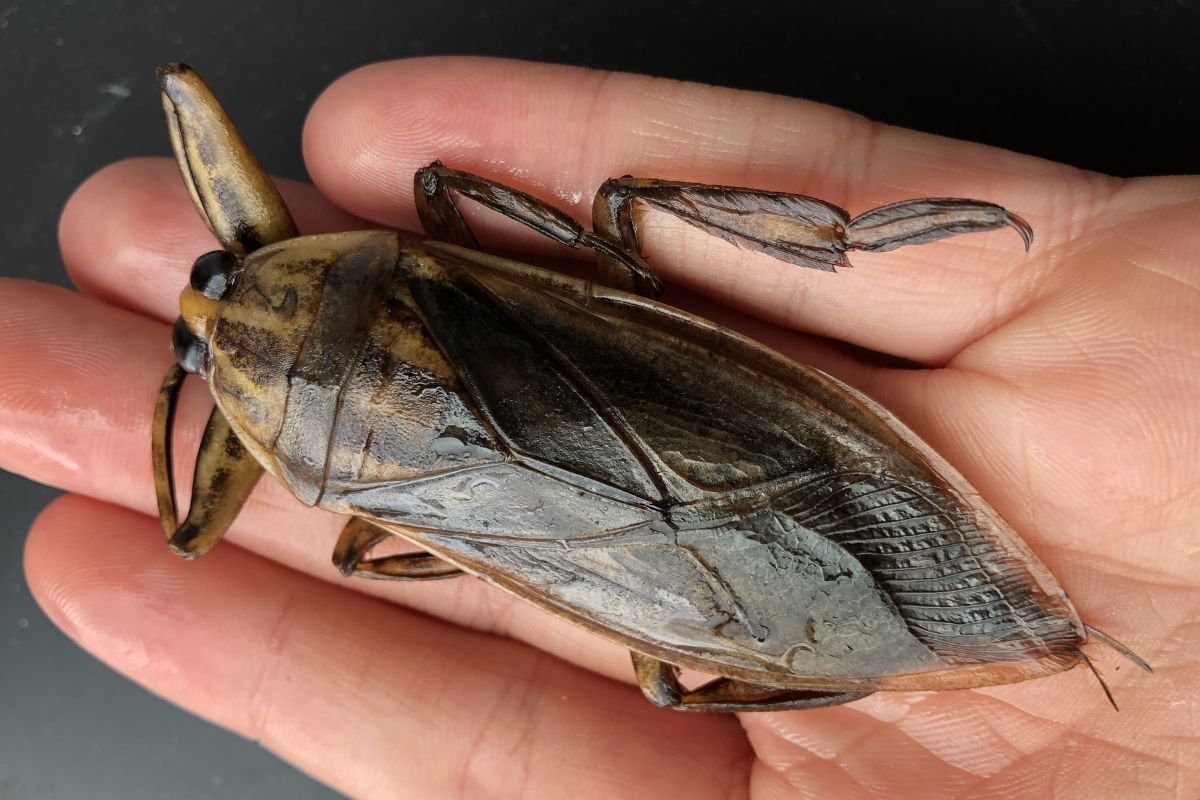
Giant water bugs are fascinating creatures that lurk in freshwater habitats like ponds, lakes, and slow-moving streams. Known for their impressive size and unique behaviors, these insects have earned nicknames like "toe-biters" and "electric light bugs." But what makes them so intriguing? Giant water bugs are not just large; they are also skilled predators, capable of taking down prey much larger than themselves. They have a unique way of breathing through snorkel-like tubes and can deliver a painful bite if threatened. Ready to learn more? Here are 35 amazing facts about these incredible insects!
Key Takeaways:
- Giant water bugs, also known as toe-biters, are fascinating aquatic predators with unique adaptations. They play a crucial role in maintaining the balance of aquatic ecosystems and are not dangerous to humans.
- Giant water bugs face threats from habitat destruction and pollution, but conservation efforts and public awareness can help protect these remarkable insects. They are important for the health of aquatic environments.
What Are Giant Water Bugs?
Giant water bugs, also known as toe-biters, are fascinating insects that belong to the family Belostomatidae. These aquatic predators are known for their impressive size and unique behaviors. Let's dive into some intriguing facts about these remarkable creatures.
-
Giant water bugs are among the largest insects in the world, with some species reaching up to 4 inches in length.
-
They are found in freshwater habitats such as ponds, lakes, and slow-moving streams.
-
These bugs are known for their powerful front legs, which they use to catch and hold onto their prey.
-
Giant water bugs are excellent swimmers, using their hind legs, which are flattened and fringed with hairs, to propel themselves through the water.
-
They have a unique way of breathing underwater, using a snorkel-like tube called a siphon that extends from their abdomen to the water's surface.
Predatory Nature of Giant Water Bugs
Giant water bugs are fierce predators, and their hunting techniques are both fascinating and effective. Here are some facts about their predatory nature:
-
They primarily feed on other aquatic insects, small fish, and amphibians.
-
Giant water bugs use their powerful front legs to grab and hold onto their prey tightly.
-
They inject digestive enzymes into their prey, which liquefies the insides, making it easier for the bug to suck out the nutrients.
-
These bugs are known to play dead when threatened, a behavior known as thanatosis, to avoid predators.
-
Despite their fearsome reputation, giant water bugs are an important part of the aquatic ecosystem, helping to control the populations of other insects and small animals.
Reproduction and Life Cycle
The reproductive habits of giant water bugs are quite unique and interesting. Let's explore some facts about their life cycle:
-
Female giant water bugs lay their eggs on the backs of males, a behavior known as paternal care.
-
The males carry the eggs until they hatch, providing protection and ensuring they remain oxygenated.
-
Once the eggs hatch, the nymphs resemble miniature versions of the adults but lack fully developed wings.
-
Nymphs go through several molts before reaching adulthood, a process that can take several months.
-
Giant water bugs have a lifespan of about one year, with most of their time spent in the nymph stage.
Unique Adaptations
Giant water bugs have several unique adaptations that help them survive in their aquatic environments. Here are some fascinating facts about their adaptations:
-
Their flattened bodies allow them to hide under rocks and debris in the water.
-
Giant water bugs have a strong, sharp beak that they use to pierce their prey and inject digestive enzymes.
-
They can survive out of water for short periods, using their siphon to breathe air.
-
These bugs have excellent vision, with large compound eyes that help them spot prey and predators.
-
Giant water bugs are known to produce a loud, hissing sound when threatened, which can deter potential predators.
Interaction with Humans
Giant water bugs have a few interesting interactions with humans, some of which can be quite surprising. Here are some facts about their relationship with people:
-
They are sometimes called "toe-biters" because they can deliver a painful bite if handled carelessly.
-
In some cultures, giant water bugs are considered a delicacy and are eaten as a source of protein.
-
They are often used in scientific research to study aquatic ecosystems and predator-prey relationships.
-
Giant water bugs are sometimes kept as pets by insect enthusiasts due to their unique behaviors and impressive size.
-
Despite their intimidating appearance, giant water bugs are not dangerous to humans and play a crucial role in maintaining the balance of aquatic ecosystems.
Conservation and Threats
Like many other species, giant water bugs face various threats that can impact their populations. Here are some facts about their conservation status and the challenges they face:
-
Habitat destruction, such as the draining of wetlands and pollution of water bodies, poses a significant threat to giant water bugs.
-
Climate change can also impact their habitats, leading to changes in water temperature and availability.
-
Pesticides and other chemicals used in agriculture can contaminate water sources, harming giant water bugs and other aquatic life.
-
Conservation efforts aimed at protecting wetlands and reducing pollution can help support giant water bug populations.
-
Public awareness and education about the importance of aquatic ecosystems can also contribute to the conservation of these fascinating insects.
Miscellaneous Facts
Here are a few more interesting tidbits about giant water bugs that didn't quite fit into the other categories:
-
Giant water bugs are sometimes mistaken for cockroaches due to their similar appearance.
-
They are known to be attracted to lights at night, often leading them to be found near outdoor lights and windows.
-
Some species of giant water bugs can emit a foul-smelling substance when threatened, which can deter predators.
-
They have been featured in various cultural references, including folklore and literature, due to their unique appearance and behaviors.
-
Giant water bugs play a crucial role in the food web, serving as both predators and prey in their aquatic environments.
The Final Splash
Giant water bugs, also known as toe-biters, are fascinating creatures. These insects, found in freshwater habitats worldwide, have a unique way of hunting. They use their powerful front legs to grab prey and inject a digestive enzyme that liquefies the insides of their catch. Despite their fearsome reputation, they play a crucial role in maintaining the balance of aquatic ecosystems.
Their ability to survive in various environments, from ponds to streams, showcases their adaptability. These bugs also exhibit interesting parental care, with males often carrying eggs on their backs until they hatch. This behavior ensures the survival of the next generation.
Understanding these insects helps us appreciate the complexity of nature. Next time you encounter a giant water bug, remember its role in the ecosystem and the fascinating traits that make it a true marvel of the aquatic world.
Frequently Asked Questions
Was this page helpful?
Our commitment to delivering trustworthy and engaging content is at the heart of what we do. Each fact on our site is contributed by real users like you, bringing a wealth of diverse insights and information. To ensure the highest standards of accuracy and reliability, our dedicated editors meticulously review each submission. This process guarantees that the facts we share are not only fascinating but also credible. Trust in our commitment to quality and authenticity as you explore and learn with us.


